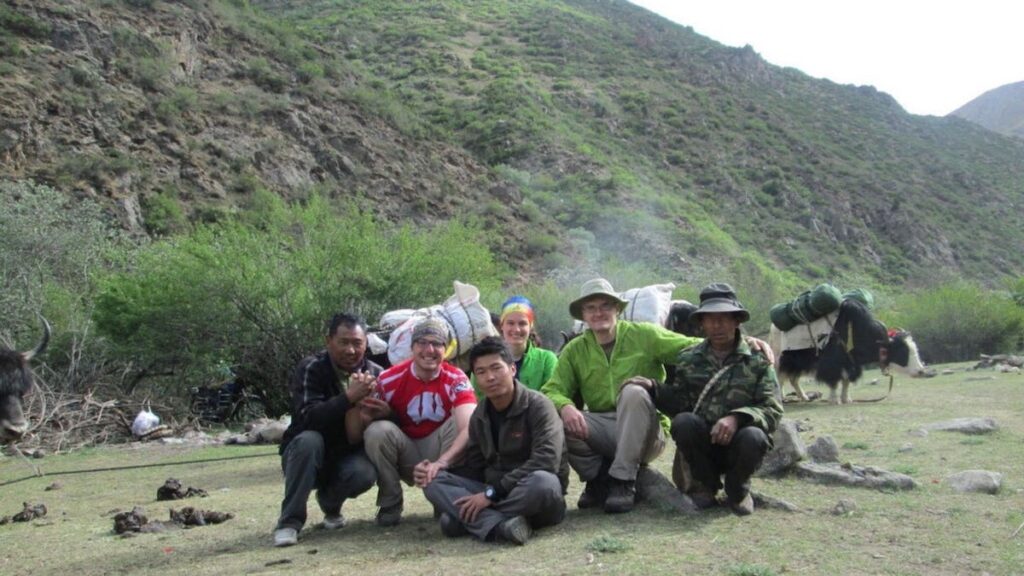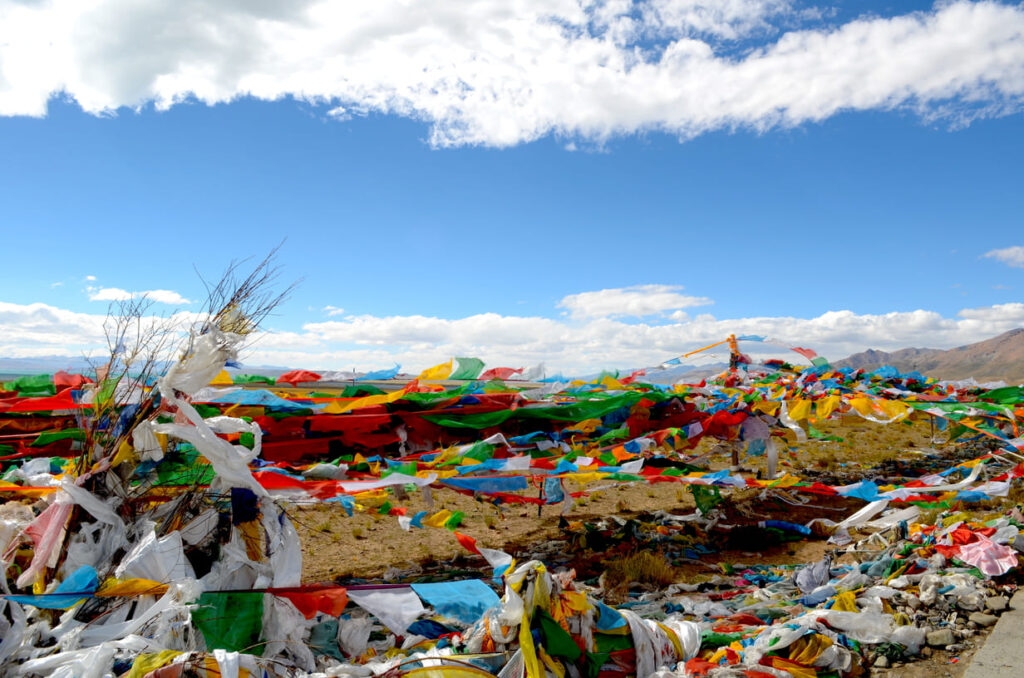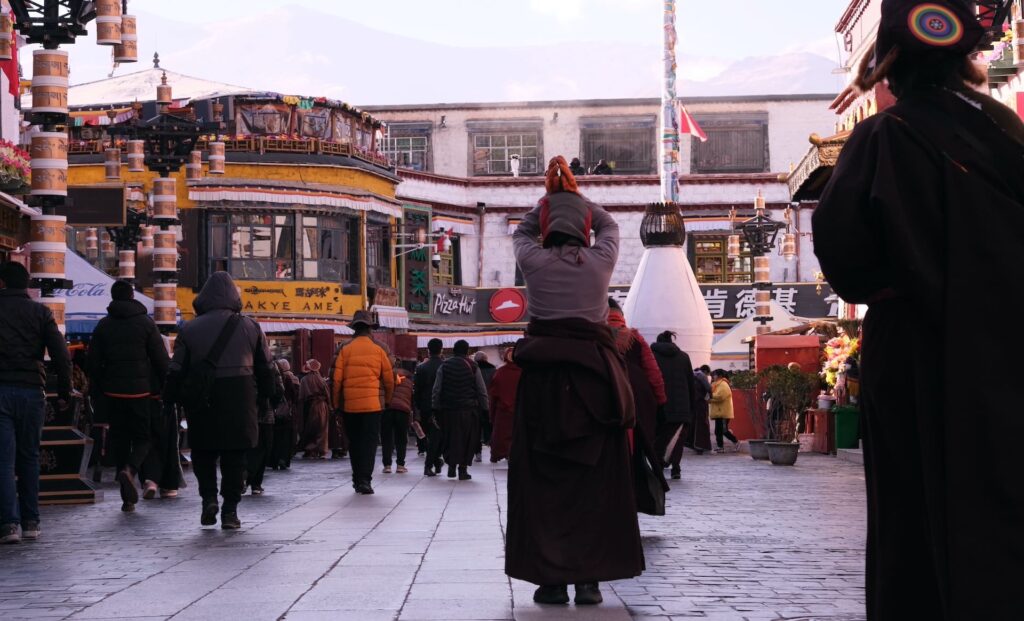Tibet is a highly popular travel destination for several reasons. Firstly, it is known for its spectacular natural beauty, with stunning landscapes that include the majestic Himalayan mountain range, crystal-clear lakes, and vast grasslands. The unique and untouched scenery of Tibet attracts nature lovers and adventure seekers from around the world.

Secondly, Tibet is deeply rooted in spirituality and is considered a sacred place by many. It is home to numerous monasteries, temples, and pilgrimage sites, This spiritual aspect of Tibet appeals to those seeking a deeper connection and understanding of Buddhism and Tibetan culture.
Furthermore, Tibet offers a rich cultural experience. Its vibrant festivals, traditional music and dance, and colorful Tibetan arts and crafts provide visitors with a glimpse into the unique Tibetan way of life. The warm hospitality of the Tibetan people adds to the overall charm of the destination.
Lastly, the sense of adventure and the opportunity to explore a remote and relatively untouched region of the world attracts many travelers. Tibet’s geographical isolation and strict travel regulations have preserved its authenticity and allure, making it a bucket-list destination for those seeking an off-the-beaten-path experience.
Overall, the combination of stunning natural landscapes, spiritual significance, rich culture, and a sense of adventure make Tibet a highly sought-after travel destination.

The challenges of traveling to Tibet on a budget
Traveling to Tibet on a budget can present some unique challenges. Here are a few key considerations:
- Permit requirements: Before traveling to Tibet, you need to obtain a Tibet Travel Permit, also known as the Alien Travel Permit. This permit can only be obtained through a registered travel agency in China, and it is necessary to enter Tibet. The cost of obtaining this permit can add to your overall budget.
- Accommodation costs: Accommodation options in Tibet can be limited, especially in more remote areas. While there are budget-friendly guesthouses and hostels available in major cities like Lhasa, accommodation costs can still be relatively high compared to other destinations. It’s advisable to book in advance to secure affordable options.
- Altitude sickness: Tibet is known for its high altitude, and altitude sickness can be a concern for many travelers. It’s important to acclimatize properly to avoid health issues. This may require additional days in Lhasa or other lower-altitude areas, which can increase your overall expenses.
- Restricted access to certain areas: Some areas in Tibet, such as Mount Kailash and certain border regions, require additional permits and may have restricted access. These permits can be costly and may require additional time to obtain.
- Limited food options: While Tibetan cuisine is unique and delicious, finding budget-friendly food options can be challenging, especially in remote areas. It’s a good idea to carry some snacks or food supplies with you to manage your expenses.
Despite these challenges, traveling to Tibet on a budget is still possible with careful planning and research. It’s important to set a realistic budget, prioritize your expenses, and be prepared for the unique experiences that this beautiful region has to offer.

Choose the right time to visit
The timing of your trip to Tibet can indeed have an impact on your budget. Here are a few ways in which timing can affect your expenses:
- Peak season vs. off-peak season: Tibet experiences a peak tourist season during the summer months, particularly from May to October. During this time, the demand for accommodations, transportation, and tour services is high, leading to increased prices. If you plan your trip during the off-peak season, which is typically from November to April, you may find lower prices for flights, accommodations, and tour packages.
- Festivals and events: Tibet is known for its vibrant festivals, such as the Tibetan New Year (Losar) and the Saga Dawa Festival. These events attract a large number of tourists, which can drive up prices for accommodations and transportation. If you plan your trip to coincide with these festivals, be prepared for higher costs. However, attending these cultural celebrations can be a unique and enriching experience.
- Weather conditions: Tibet’s weather can vary significantly throughout the year. The summer months (June to August) are generally warmer, with more tourists visiting during this time. However, the weather can be unpredictable, with occasional rain and thunderstorms. The winter months (December to February) are colder, but you may find lower prices for accommodations and flights. It’s important to consider your comfort level and the activities you plan to engage in when deciding on the timing of your trip.
- Availability of services: Some services, such as trekking tours or visits to certain remote areas, may be limited or unavailable during certain times of the year due to weather conditions or road closures. This can impact your itinerary and potentially increase costs if you need to make alternative arrangements.
Additional tips and advice for planning a budget trip to Tibet
To make the most of your budget, it’s advisable to research and compare prices for different seasons, consider the weather conditions that align with your preferences, and be flexible with your travel dates if possible. Additionally, booking in advance and being open to alternative accommodations or transportation options can help you secure better deals. Here are some additional tips and advice for travelers planning a budget trip to Tibet:
- Plan and research in advance: Start planning your trip well in advance to take advantage of early bird discounts and better deals on flights, accommodations, and tour packages. Research different travel agencies, compare prices, and read reviews to find reliable and budget-friendly options.
- Consider joining a group tour: Group tours can often be more cost-effective than traveling solo. By joining a group tour, you can share expenses such as transportation, guide fees, and permits. Look for reputable tour operators that offer budget-friendly group tours to maximize your savings.
- Pack wisely: Pack essential items such as warm clothing, comfortable shoes, and a good quality sleeping bag if you plan on trekking or staying in guesthouses. Bringing your own reusable water bottle and snacks can also help you save money on food and beverages during your travels.
- Eat like a local: Explore local eateries and street food stalls to experience authentic Tibetan cuisine at affordable prices. Tibetan momo dumplings, thukpa (noodle soup), and butter tea are popular local dishes worth trying. Avoid dining at touristy restaurants, as they tend to be more expensive.
- Use public transportation: Utilize public transportation options like buses and shared taxis to get around within Tibet. They are generally cheaper than private transportation services. However, be prepared for longer travel times and limited schedules, especially in remote areas.
- Stay in budget accommodations: Look for budget-friendly guesthouses, hostels, or Tibetan-owned homestays for affordable accommodation options. These establishments often provide a more authentic cultural experience as well. Booking in advance can help you secure better rates.
- Explore free or low-cost attractions: Tibet is home to numerous monasteries, temples, and natural landscapes that can be explored without spending a fortune. Research and prioritize free or low-cost attractions to make the most of your budget while still immersing yourself in the local culture and scenery.
- Learn basic Tibetan phrases: Learning a few basic Tibetan phrases can go a long way in connecting with locals and negotiating better prices. The locals appreciate the effort, and it can lead to more meaningful interactions and potential cost savings.
Remember, traveling on a budget doesn’t mean compromising on experiences. With careful planning, research, and a willingness to embrace the local culture, you can have a memorable and affordable trip to Tibet.

Conclusion
Embarking on a budget trip to Tibet requires careful planning, research, and a willingness to be flexible. While there are challenges to consider, such as permit requirements, limited transportation options, and higher accommodation costs, it is still possible to explore this enchanting region without breaking the bank.
By timing your trip strategically, considering off-peak seasons, and being mindful of festivals and events, you can find better deals on flights, accommodations, and tour packages. Packing wisely, eating like a local, utilizing public transportation, and staying in budget accommodations are all ways to save money while immersing yourself in the rich Tibetan culture.

Exploring free or low-cost attractions and learning basic Tibetan phrases can enhance your experience without straining your budget. Remember, a budget trip to Tibet is not just about saving money, but also about embracing the unique beauty, spirituality, and cultural heritage of this extraordinary destination. With the right mindset and a little bit of planning, you can embark on a budget adventure that will leave you with lasting memories of Tibet’s awe-inspiring landscapes and warm-hearted people.

[…] on a journey to Tibet in 2024 promises a soul-stirring adventure. By obtaining the right permits, selecting a reputable […]